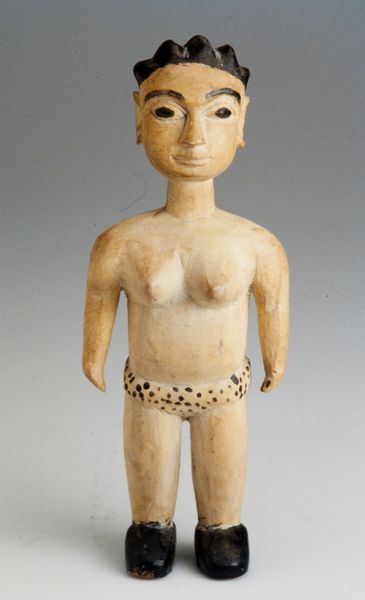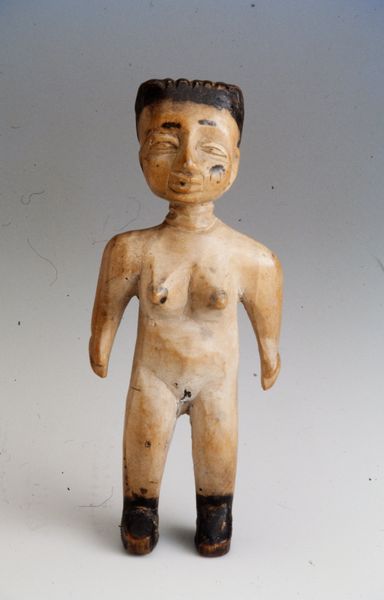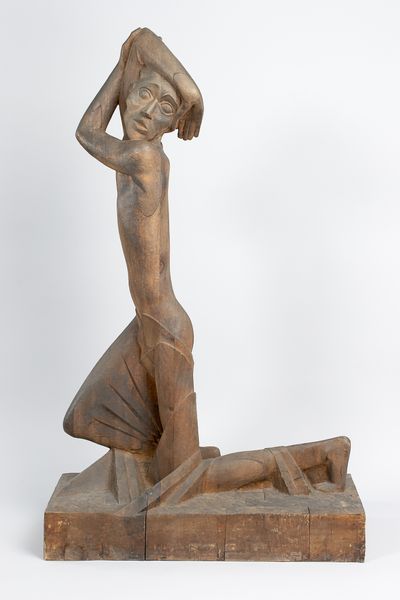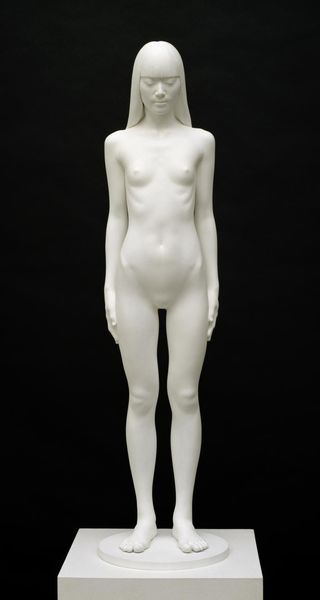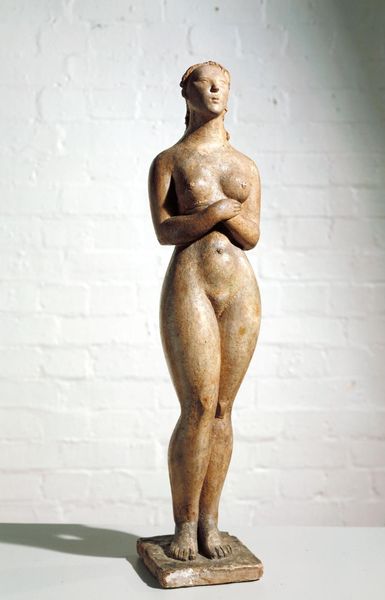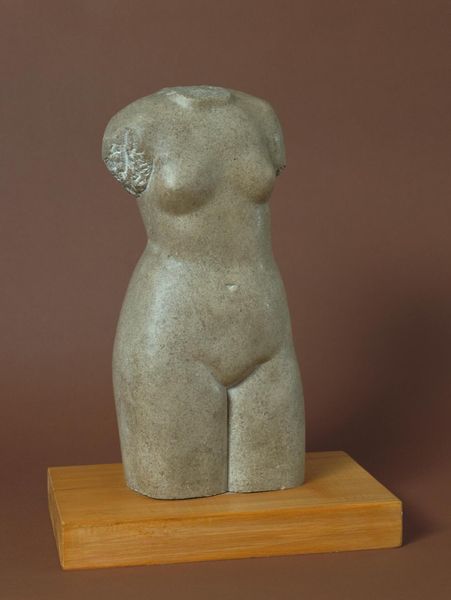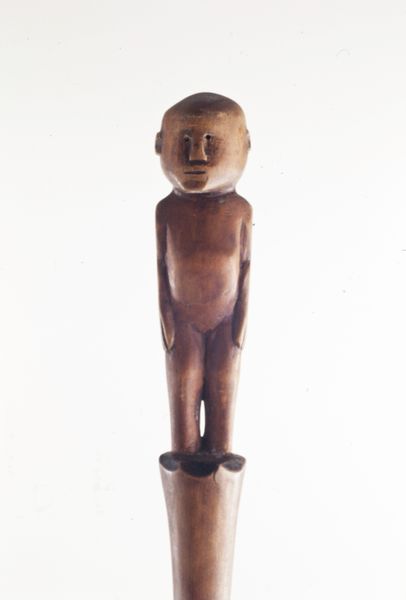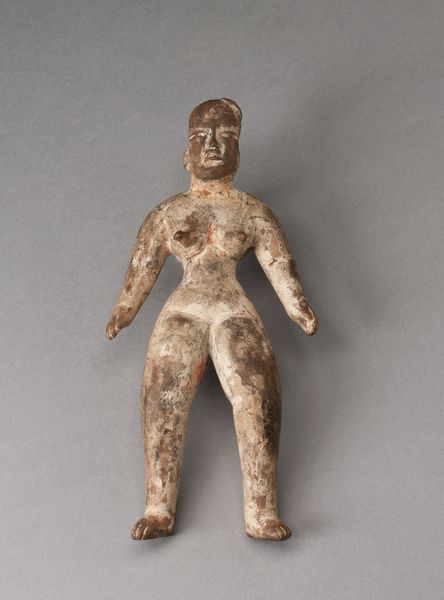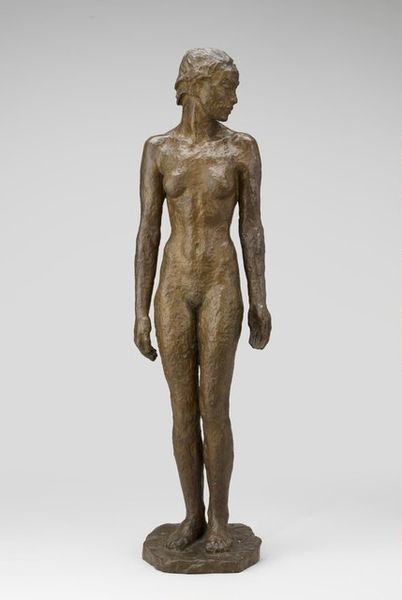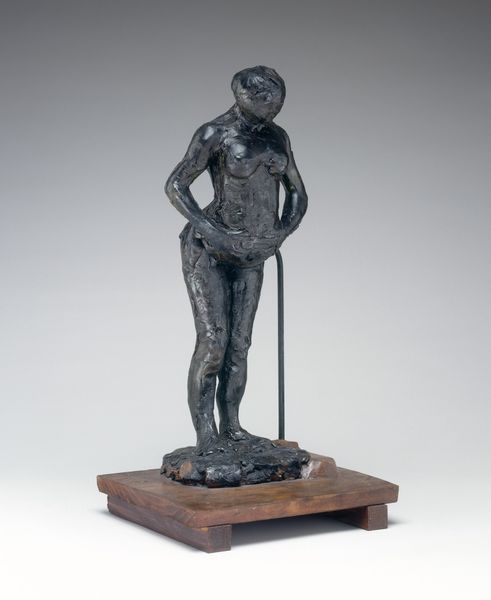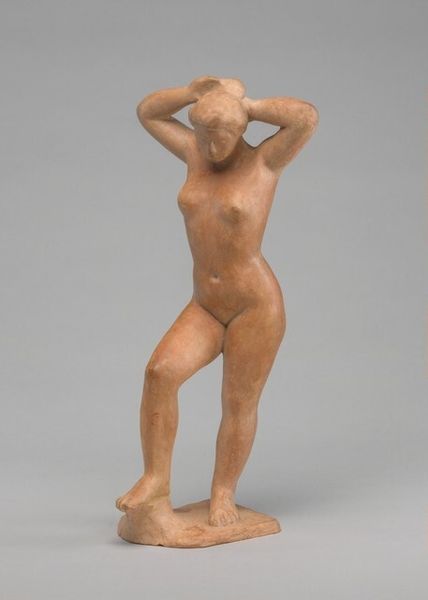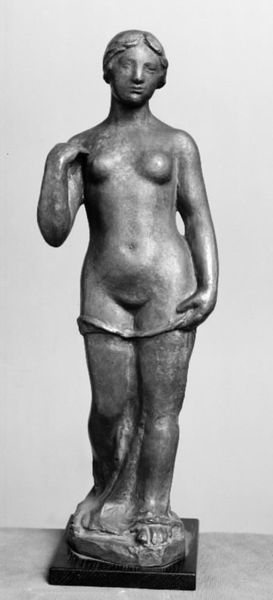
carving, sculpture, wood
#
portrait
#
carving
#
figuration
#
sculpture
#
expressionism
#
wood
#
nude
Dimensions: 63.5 x 19.5 cm
Copyright: Public Domain
Curator: Here we have Ernst Ludwig Kirchner's sculpture "Sad Woman; Standing Female Nude; Nude Girl," crafted in 1921 from wood. It's part of the Städel Museum collection. Editor: Oh, wow. She's… vulnerable. The way she holds her hands, almost protectively. I get this feeling of fragility from her, even though she's made of wood. Curator: That vulnerability resonates with Kirchner’s broader engagement with themes of alienation and psychological distress prevalent in Expressionist art. The wood carving itself carries the marks of the artist's hand, further amplifying the emotional intensity. The female nude, particularly within Expressionism, became a vehicle to explore anxieties surrounding modernity, gender roles, and the objectification of women. Editor: I see what you mean about the wood amplifying the feeling. It's not smooth or polished; you can really see the gouges, like little wounds. Is that deliberate, do you think? A way to express… trauma? Curator: It's highly probable. Expressionist artists frequently embraced distorted forms and unconventional materials to convey raw emotional states, often reflecting the socio-political unrest of the time. Consider the rise of the "New Woman" in Weimar Germany, the complex renegotiation of gender, and how Kirchner situates his female figures in this dynamic social environment. The seeming contradiction of carving a soft human form out of hard wood is crucial, a commentary on the pressures imposed on the modern woman perhaps? Editor: That makes sense. I hadn’t thought of that, the "New Woman" versus the, you know, medium's resistance. The title, "Sad Woman," feels almost too simplistic for what I’m seeing, now that you put the sociopolitical dimension on the stage. Curator: Well, titles can be deceiving, right? Simplicity might even be a deliberate tactic here, offering a surface-level reading that belies deeper, more unsettling implications. Editor: Yeah, now I see her less as just “sad,” but trapped in a really complicated bind. Curator: Exactly. Hopefully our audience will feel empowered to do more thinking about that "bind." Editor: I will definitely leave here thinking about it for longer, how such a sturdy material is a symbol of fragility and sadness.
Comments
stadelmuseum about 2 years ago
⋮
'Melancholy Girl' was the name Kirchner gave to this sculpture carved from Swiss pine, which he first presented to the public at the Galerie Schames in Frankfurt. In a state of collapse and with reddened eyes, the woman demonstratively presents her feminine charms. Kirchner has combined in the figure the appearance of his two most important partners: the body recalls that of Doris Große, his friend during his time in Dresden, while the head is that of Erna Schilling, his companion in later years. With its smooth surface and carefully coloured setting, the sculpture remains unique in Kirchner's sculptural works.
Join the conversation
Join millions of artists and users on Artera today and experience the ultimate creative platform.
